Ken Ford named AAAS Fellow
Published 11.24.15
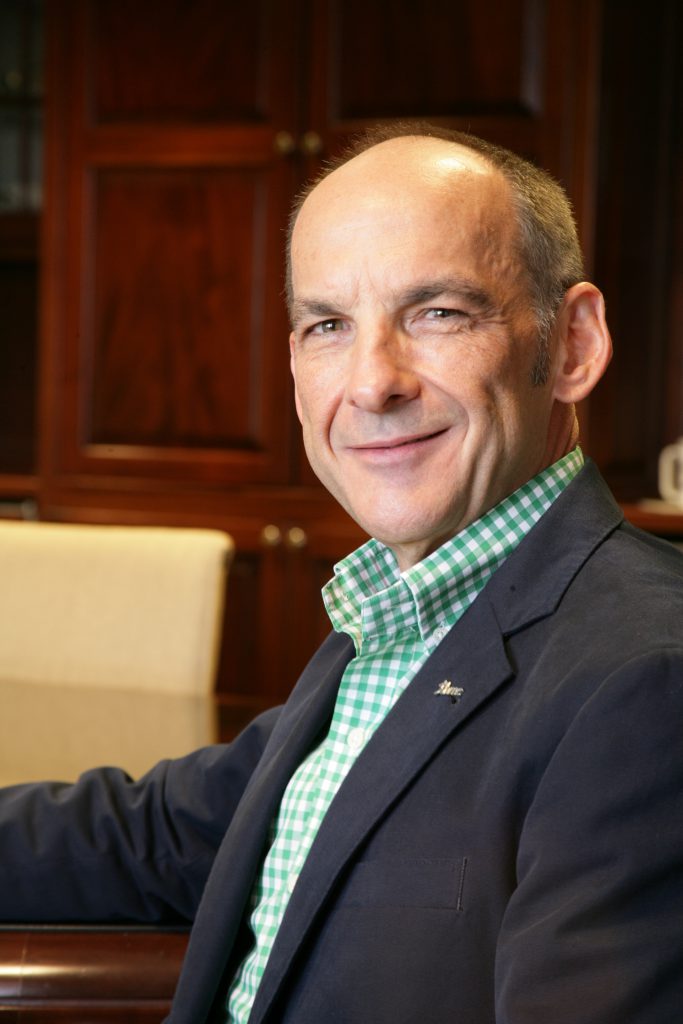 The American Association for the Advancement of Science (AAAS) has elected Ken Ford, director and CEO of the Florida Institute for Human and Machine Cognition (IHMC), as a Fellow.
The American Association for the Advancement of Science (AAAS) has elected Ken Ford, director and CEO of the Florida Institute for Human and Machine Cognition (IHMC), as a Fellow.
Ford is one of 347 scientists who have been named Fellows this year. The electing Council elects people “whose efforts on behalf of the advancement of science of its applications are scientifically or socially distinguished.”
According to a press release from AAAS, Ford was selected “for founding and directing the IHMC, for his scientific contributions to artificial intelligence and human-centered computing, and for service to many federal agencies.”
“I am truly honored to be inducted as an AAAS Fellow,” Dr. Ford said. “The advancement of science is what we strive for every day at IHMC; to be recognized for it by scientists is a reward in itself.”
IHMC, which Ford founded in 1990, is known for its groundbreaking research in the field of artificial intelligence. It employs scientists and engineers from around the world who are investigating topics related to building technological systems aimed at amplifying and extending human cognitive, physical and perceptual capacities. Its headquarters are in Pensacola, Fla., with an associated research facility in Ocala, Fla.
Ford himself is a renowned artificial intelligence researcher. He holds numerous awards and honors, including the Association for the Advancement of Artificial Intelligence (AAAI) Distinguished Service Award.
He has also served on the National Science Board, chaired the NASA Advisory Council and served on the U.S. Air Force Science Advisory Board and the Defense Science Board.
AAAS began electing Fellows in 1874. The AAAS chief executive officer, or AAAS members elect Fellows. There are an estimated 100,000 AAAS members.
Ford and the other Fellows will receive an official certificate and a gold and blue rosette pin on Saturday, February 13 at the AAAS Fellows Forum during the 2016 Annual Meeting in Washington, D.C.
IHMC Scientist Named To Florida Inventors Hall Of Fame
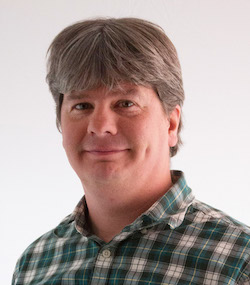 Published 9.10.15
Published 9.10.15
Jerry Pratt, one of the world’s leading researchers in the field of robotics, has been named to the Florida Inventors Hall of Fame, joining an august group of inventors which includes the likes of Thomas Edison.
Pratt, a senior research scientist at the Florida Institute for Human and Machine Cognition (IHMC) in Pensacola, holds four patents on robotics inventions and is considered a rising star in the field. He is one of seven people with Florida connections who will be inducted into the Hall at an October ceremony in Tampa. Others in this group, the second year of inductees, include famed automaker Henry Ford and scientist Robert Grubbs, winner of the 2005 Nobel Prize in chemistry.
“Collectively, the seven 2015 inductees hold more than 430 U.S. patents,” said Randy Berridge, chairman of the selection committee. “Their high merit has been recognized by national and international institutions and communities … and we are honored to be inducting them into the Florida Inventors Hall of Fame.”
Pratt said he was honored and humbled by the recognition.
“Sometimes I think what’s most fun about working in robotics is that we are practically inventing the field every day,” Pratt said. “There’s a long way to go before robotics is a mature field, and I am honored to join so many other people who are working to create the future.”
Pratt, 43, holds a Ph.D. in computer science from the Massachusetts Institute of Technology. Before joining IHMC in 2002, Pratt’s company developed a powered exoskeleton that allowed a person to carry large loads over rough terrain with little effort. His other patents cover technology that allows bipedal robots to know where to place their feet when walking, and to maintain their balance and prevent falls.
Pratt leads a team of researchers who also developed the HexRunner, which last year set a world speed record for legged robots, reaching speeds of more than 30 mph. Pratt’s work has been instrumental in changing the stereotype of robots as clunky machines with jerky movements to ones that maximize speed, agility and biological similarity, said IHMC founder and CEO Ken Ford.
“We’re really proud of Jerry; it’s a well-deserved honor,” Ford said. “Jerry’s work personifies the subtle and rather beautiful virtuous cycle between the acts of invention and of scientific discovery.”
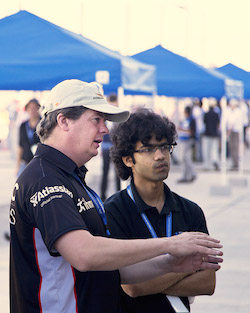 In June, Pratt and the IHMC Robotics Team will compete in the final round of the Defense Advanced Research Projects Agency’s (DARPA) international robotics competition, which tests the ability of humanoid robot systems to respond to disasters. The team placed first in the Virtual Robotics Challenge, a computer simulation, and second in the DRC Trials at Homestead Miami Speedway using actual robots in a competition featuring 26 teams from around the globe.
In June, Pratt and the IHMC Robotics Team will compete in the final round of the Defense Advanced Research Projects Agency’s (DARPA) international robotics competition, which tests the ability of humanoid robot systems to respond to disasters. The team placed first in the Virtual Robotics Challenge, a computer simulation, and second in the DRC Trials at Homestead Miami Speedway using actual robots in a competition featuring 26 teams from around the globe.
Pratt is married to former Pensacola City Councilwoman Megan Benson Pratt. They have two children. The couple co-founded the Pensacola MESS Hall, a hands-on learning center where kids explore Math, Engineering, Science and Stuff. It is a spinoff of IHMC’s Science Saturdays education outreach program.
The Florida Inventors Hall of Fame, begun in 2013, is based in Tampa and seeks to recognize the leading scientific and technological accomplishments in the state. Nominees, who must have at least one U.S. patent, are submitted through an open nomination process and are elected by a committee of distinguished leaders in research and innovation throughout Florida.
For more information on the Hall of Fame and the complete list of inductees, visit www.floridainvents.org.
Ken Ford receives top AAAI award
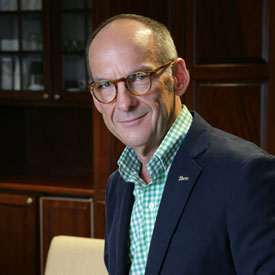 Published 9.4.15
Published 9.4.15
The Association for the Advancement of Artificial Intelligence (AAAI) has awarded one of its highest honors, the AAAI Distinguished Service Award, to Dr. Ken Ford, director and CEO of the Florida Institute for Human and Machine Cognition (IHMC).
The Distinguished Service Award, established in 1999, recognizes a single individual each year “for extraordinary and sustained service” to the artificial intelligence (AI) community. Dr. Ford is the 14th honoree.
In a letter to Dr. Ford announcing the honor, Awards Committee Chair Manuelo Veloso wrote that he was “specifically honored for your contributions to the field of artificial intelligence through sustained service, including the founding of the Florida Institute for Human and Machine Cognition (IHMC), leadership roles at NASA, and your work on the advisory boards of federal science and technology research organizations.”
In nominating Dr. Ford for the award, former NASA Administrator Michael D. Griffin said that, “Few technologies have greater potential benefit to humanity than does the field of artificial intelligence, and even fewer people are able to convey the essence and importance of the field to federal leaders in the fashion in which Ken Ford has done and continues to do it. He is quite simply a national resource, and a more than deserving recipient of the AAAI Distinguished Service Award.”
Griffin said that to many people at NASA, “Ken Ford simply ‘is’ artificial intelligence as it relates to the field of space flight.”
He also cited Dr. Ford’s “stunning success in founding and growing IHMC,” which has become known for its groundbreaking research in the field of artificial intelligence.
“I’m truly humbled by the recognition from AAAI,” Dr. Ford said. “It is a testament to the important work done by my colleagues at IHMC.”
In addition to founding IHMC, Dr. Ford is a groundbreaking AI researcher. He is Emeritus Editor-in-Chief of AAAI/MIT Press and is an AAAI Fellow, a charter Fellow of the National Academy of Inventors, a member of the Association for Computing Machinery, a member of the IEEE Computer Society, and a member of the National Association of Scholars. He has received numerous awards and honors, including the Doctor Honoris Causas from the University of Bordeaux in 2005 and the 2008 Robert S. Englemore Memorial Award for his work in AI. In 2012, Tulane University named him its Outstanding Alumnus in the School of Science and Engineering. He served on the National Science Board, chaired the NASA Advisory Council, and has served on the Air Force Science Advisory Board and the Defense Science Board.
Under his leadership, IHMC has grown into one of the nation’s premier research organizations with world-class scientists and engineers investigating a broad range of topics related to building technological systems aimed at amplifying and extending human cognitive, physical and perceptual capacities. Its headquarters are in Pensacola, Fla., with an associated research facility in Ocala, Fla.
The award was presented during the AAAI annual meeting in Austin, Texas, on January 27. Previous winners include Barbara Grosz of Harvard, Raj Reddy of Carnegie Mellon, Nils Nilsson of Stanford, Ronald J. Brachman of Yahoo Research and David Waltz of Columbia.
IHMC Board Member Cited for High Honor
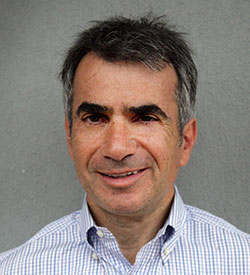 Published 9.4.15
Published 9.4.15
Dr. Alain T. Rappaport has been named a prestigious Fellow of the National Academy of Inventors (NAI). Dr. Rappaport is a member of the Florida Institute for Human and Machine Cognition (IHMC) Board of Directors and of its Science Advisory Council.
Dr. Rappaport was cited as having “demonstrated a highly prolific spirit of innovation in creating or facilitating outstanding inventions that have made a tangible impact on quality of life, economic development, and the welfare of society.”
The Tampa-based NAI was founded in 2010 “to recognize investigators at universities and non-profit research institutes who translate their research findings into inventions that may benefit society,” according to the group’s website. “To join, an inventor must be affiliated with a Member Institution and be a named inventor on one or more patents issued by the United States Patent and Trademark Office.”
Dr. Rappaport is an Internet and software entrepreneur, the co-founder and CEO of Nudgit, Inc., an Internet company focused on intelligent choice. He received his M.D. from the Necker Sick-Children School of Medicine, René Descartes University, and his Ph.D. in Molecular Pharmacology from the Pierre and Marie Curie University in Paris. Prior to Nudgit, Dr. Rappaport was general manager of health search in the Bing group at Microsoft Corporation until September 2010. He also served as general manager of health search for Microsoft’s Health Solutions Group.
He has published in the areas of artificial intelligence, cognitive science and neurosciences in major journals and has been a speaker in leading technology and business workshops and conferences. Dr. Rappaport served as a NASA Advisory Council, Technology and Innovation Committee member in 2010-2012 and is a founding member of the Innovative Applications of Artificial Intelligence (IAAI) Conference. He holds over 10 patents.
The new class of 170 brings the total number of NAI Fellows to 414, who collectively hold nearly 14,000 patents and represent more than 150 top research institutes and universities around the world.
NAI Fellows now include 61 presidents and senior leadership of research universities and non-profit research institutes, 208 members of the other National Academies (NAS, NAE, IOM), 21 inductees of the National Inventors Hall of Fame, 16 recipients of the U.S. National Medal of Technology and Innovation, 10 recipients of the U.S. National Medal of Science, 21 Nobel Laureates, 11 Lemelson-MIT prize recipients, 107 AAAS Fellows, and 62 IEEE Fellows.
IHMC Director and CEO Dr. Ken Ford was named a Charter NAI Fellow in 2012, and IHMC Board Member Dr. William Dalton was named a Fellow in 2013.
Dr. Rappaport will be inducted during the 4th Annual Conference of the National Academy of Inventors on March 20, 2015, at the California Institute of Technology in Pasadena.
IHMC CEO on Panel Awarding Brain Research Money for NFL Partnership
 Published 9.4.15
Published 9.4.15
The NFL has announced seven winners of $500,000 brain research grants in Head Health Challenge II. Ken Ford, director/CEO of the Florida Institute for Human and Machine Cognition, serves on the six-person judging panel that selected the winners, who are eligible to receive up to $8.5 million to accelerate brain injury research, diagnosis and protection. The NFL’s partners in Head Health Challenge II are Under Armour and General Electric.
The winners, which include researchers from the public and private sectors, were selected among nearly 500 proposals that were submitted between Sept. 2013 and Feb. 2014 from 19 countries.
“We had to pick the winners from a long list of smart, innovative proposals that represent some of the best new ideas on how to prevent, diagnose and treat traumatic brain injuries,” Dr. Ford said. “It’s very rewarding to be able to be part of the Head Health Challenge II program. The implications go well beyond football.”
Concern about traumatic brain injuries has been sparked by the increased awareness of problems stemming from a variety of causes, including the use of powerful improvised explosive devices (IEDs) and the increased awareness of concussions in football and other sports.
Dr. Ford was named to the panel due to his significant expertise and experience in the development of technologies intended to enable cognitive orthotics and his broad background in science and technology R&D. An international leader in research on human cognition and artificial intelligence (AI), Ford holds a Ph.D. in computer science. He served as chairman of the NASA Advisory Council (Oct. 2008-Oct. 2011), received a presidential appointment in 2002 to the National Science Board, and recently completed a term on the Defense Science Board.
According to an NFL release, progress of the initiatives will be monitored over the next year. Each winner will receive $500,000 and have the opportunity to receive an additional $1 million to advance their research on brain injury.
“The disruptive ideas introduced by these seven entries are designed to increase brain safety for athletes, members of the armed forces and society at-large,” the release stated. “The stories behind the winning entries and their pioneering efforts in this field are showcased in seven short online videos available to watch atwww.headhealthchallenge.com.”
The effort is part of a multi-year collaboration among Under Armour, GE and the NFL called the Head Health Initiative. Launched in March 2013, it includes a four-year, $40 million research and development program from the NFL and GE to develop next-generation imaging technologies to improve diagnosis and allow for targeting treatment therapy for patients with mild traumatic brain injury.
The full NFL release can be found at NFL.com, or www.nflevolution.com/article/nfl,-under-armour,-ge-announce-head-health-challenge-ii-winners?ref=0ap3000000427468.
IHMC robot sets world speed record
Published 9.2.15
A new land-speed record for legged robots was achieved on May 22 by researchers at the Florida Institute for Human and Machine Cognition (IHMC). The HexRunner robot reached an estimated 30-33 mph on an open course, without any support tethers.
The record-setting run was filmed by the Discovery Channel, which is expected to broadcast it later this summer.
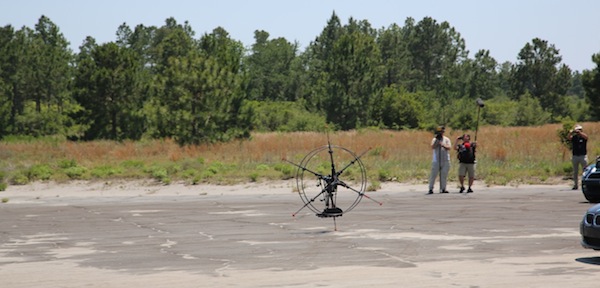 The HexRunner running robot on its record-setting speed run.
The HexRunner running robot on its record-setting speed run.
“More significant than the top speed is showing that you can make a running robot that doesn’t need a lot of feedback from sensors, and you don’t need a lot of actuation,” said IHMC Senior Research Scientist Jerry Pratt, team leader of the HexRunner project.
HexRunner is a running robot with six spring-loaded legs revolving around a central hub, with three legs on each side of the hub. At the tip of the top leg it stands six feet high. Dr. Pratt said the speed was measured with a chase car and through analysis of high-speed motion video shot from the side.
“The speedometer on the chase car hit 33 while the robot was still running away from it,” he said. The 30 mph documented speed is a conservative figure based on motion analysis from video taken during the test. “We might be able to hit 45 mph with small modifications if we have a good run on a long enough course.”
The HexRunner is the “parent” of the OutRunner robot, a two-foot version based on technology licensed from IHMC to Robotics Unlimited, headed by Research Scientist Sebastien Cotton, who worked on the HexRunner team.
HexRunner was developed as part of IHMC’s DARPA-sponsored FastRunner project. Dr. Pratt said that the FastRunner robot is more complicated than HexRunner, and while it has shown excellent stability in simulation, the research team doesn’t fully understand the stabilizing mechanisms. HexRunner, a less complex machine, was built to help develop that understanding.
“By looking at the HexRunner and understanding why it is stable, we can now look at the more complicated model and see if we see the same stabilizing mechanisms,” Dr. Pratt said. “And once we understand better what is going on, then we should be able to get the FastRunner working.”
He credits a computer simulation done by IHMC Research Associate Johnny Godowski for leading to HexRunner, under development for about a year.
“We had to do something completely different than had been done before,” Godowski said. “It’s a different architecture, but it mimics what’s being done in nature. It opened new vistas between engineering and biology.”
The ultimate goal, Dr. Pratt said, is to figure out how animals run in nature, an understanding that could produce breakthroughs in robotics.
“The high-level question is how can animals run with stability at high speeds?” he said. “And how can we make a robot to achieve the same feats?”
IHMC Research Scientist Chris Schmidt-Wetekam said one of the next goals of the FastRunner project is to develop a fully segmented leg that more closely mimics biology.
“We’re working toward more complicated robots,” Dr. Schmidt-Wetekam said. “Things look really promising in simulation, but it’s a lot more complicated in actuality, so we went back to basics. HexRunner checks off an important box on our checklist, and validates our simulation. OK, we can do this.”
IHMC Scientist featured at inaugural STEM Symposium
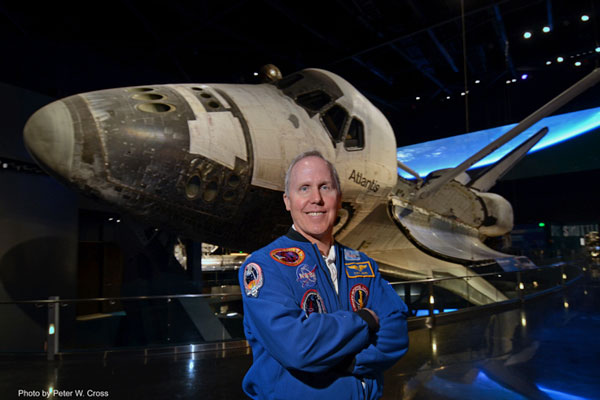
Published 9.2.15
Veteran Shuttle astronaut Tom Jones, a senior research scientist at the Florida Institute for Human and Machine Cognition (IHMC), will be a featured speaker at the first-ever X-STEM: Extreme STEM Symposium in Washington, D.C., on April 24.
The symposium opens the third annual USA Science & Engineering Festival Expo and Book Fair, April 26-27, hosted by sponsor Lockheed Martin. Held at the Walter E. Washington Convention Center, X-STEM is a “TED-style” event for kids with talks by 50 of the nation’s most noted science, technology, engineering and mathematics (STEM) professionals representing top universities, corporations, non-profits and governmental agencies.
“I’m honored to speak at X-STEM and get to meet some of our future explorers,” Jones said. “Exciting our young people about science, technology, engineering and math — so they can write the next chapter in the history of space exploration — is crucial to America’s future. I hope I can help energize tomorrow’s explorers, scientists, inventors and entrepreneurs. They’re the ones who will revitalize and maintain our competitive, vibrant economy.“
Jones is a veteran NASA astronaut, planetary scientist, author and speaker. He flew on four space shuttle missions, and led three spacewalks at the International Space Station (ISS) to help install the U.S. science lab, Destiny.
The Wall Street Journal named Jones’s book, “Sky Walking: An Astronaut’s Memoir,” one if its “Five Best” books on space. He writes frequently on space exploration and history, and offers regular on-air commentary about the United States’ space exploration activities and plans.
An Air Force Academy graduate, he earned a Ph.D. in planetary sciences from the University of Arizona, conducting a telescopic search for water on asteroids. He flew B-52 bombers for the Air Force, studied solar system exploration concepts for NASA, engineered CIA intelligence-gathering systems, and served on the NASA Advisory Council. His current interests are asteroid exploration and resources, planetary defense, and extending human exploration to the Moon, asteroids and Mars.
Jones’ current books include “Planetology: Unlocking the Secrets of the Solar System” (written with Ellen Stofan, Ph.D.; National Geographic), and “Hell Hawks!” (written with Robert F. Dorr; Zenith Press), a true story of an aerial band of brothers in World War II.
Founded by serial entrepreneur Larry Bock and Lockheed Martin CTO Ray O. Johnson to address the severe shortage in science and tech talent, the USA Science & Engineering Festival is the nation’s largest science festival. More than 250,000 people are expected to attend.
Geared toward middle and high-school students, X-STEM features interactive presentations and workshops by top STEM role models and industry leaders to inspire students about STEM careers. Sessions will cover a wide array of subject areas, including space exploration, storm chasing, oceanography, the science of social networks, the physics of superheroes, mathematical puzzles and more.
For more information, visit www.USAScienceFestival.org.
Bradshaw to chair new Nissan advisory board
Published 9.2.15
IHMC Senior Research Scientist Jeff Bradshaw has been named chair of the inaugural Scientific Advisory Council for the Nissan Research Center — Silicon Valley, in Sunnyvale, Calif.
The advisory group will give guidance on matters of science, technology, research and other similar topics of special interest to Nissan Motor Corporation. That includes research regarding autonomous vehicles, connected vehicles, human machine interactions and other matters of special interest to Nissan.
“I’m excited to work with this stellar group of experts,” Dr. Bradshaw said. “Nissan’s commitment to a human-centered, rather than a technology-centered, design approach puts them in a unique and enviable competitive position. As a result, they will produce well connected, environmentally aware and highly capable vehicles that excel in their safety, usability and usefulness.”
The other members of the board are James Euchner, vice president of Global Innovation, Goodyear Tire & Rubber Company; Dr. Don Norman, co-founder of the Nielsen Norman Group; Dr. Missy Cummings, associate professor at Duke University and director of the Humans and Autonomy Laboratory; and Dr. Terry Fong, director of the Intelligent Robotics Group at the NASA Ames Research Center.
Human-Agent-Robot Teamwork has been a central interest for Dr. Bradshaw. From 2002-2006, IHMC’s KAoS framework was used as part of a NASA series of annual two-week field tests of human-robot teams led by Dr. Bill Clancey and Dr. Maarten Sierhuis performing simulated planetary surface exploration at the Mars Desert Research Station in the Utah desert. With Dr. Sierhuis he co-founded and, with the help of Dr. Catholijn Jonker and Dr. Virginia Dignum, organized the Human-Agent-Robot Teamwork Workshop series (HART). Recently, Dr. Bradshaw led an international workshop for the National Academies of Science (NAS) on Intelligent Human-Machine Collaboration.
In collaboration with Dr. Paul Feltovich, Matt Johnson and Dr. Robert Hoffman of IHMC, and Dr. David Woods and others, Dr. Bradshaw has co-authored a series of influential articles relating to the inadequacies of the supervisory control model, the “myths of autonomy,” and the virtues of what Johnson has termed, developed and championed as “coactive design” — an approach to human-machine interaction that contributed to IHMC’s leading performance within the DARPA Robotics Challenge program.
Nissan, Japan’s second-largest automotive company, is headquartered in Yokohama, Japan, and is part of the Renault-Nissan Alliance. Operating with more than 236,000 employees globally, Nissan sold more than 4.9 million vehicles and generated revenue of $116.16 billion in fiscal 2012.
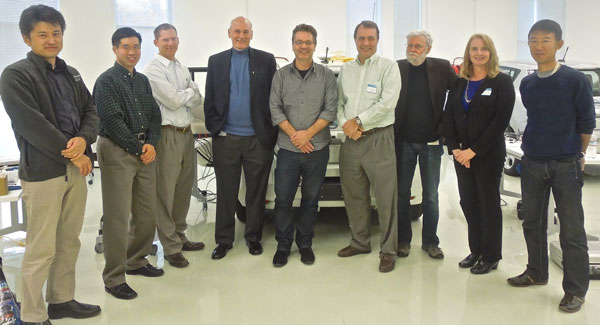
IHMC Senior Research Scientist Jeff Bradshaw has been named chair of the inaugural Nissan Scientific Advisory Council (SAC). Pictured from left to right: Yoshitaka Deguchi (Nissan Research Center-Sillicon Valley, Principal Researcher); Terry Fong (member, SAC); Greg Dibb (NRC-SV, Senior Manager of Strategy and Operations); Jim Euchner (member, SAC); Maarten Sierhuis (NRC-SV Director); Jeff Bradshaw (Chair, SAC); Don Norman (member, SAC); Missy Cummings (member, SAC); and Takeshi Mitamura (General Manager, Nissan Mobility and Services Laboratory).

